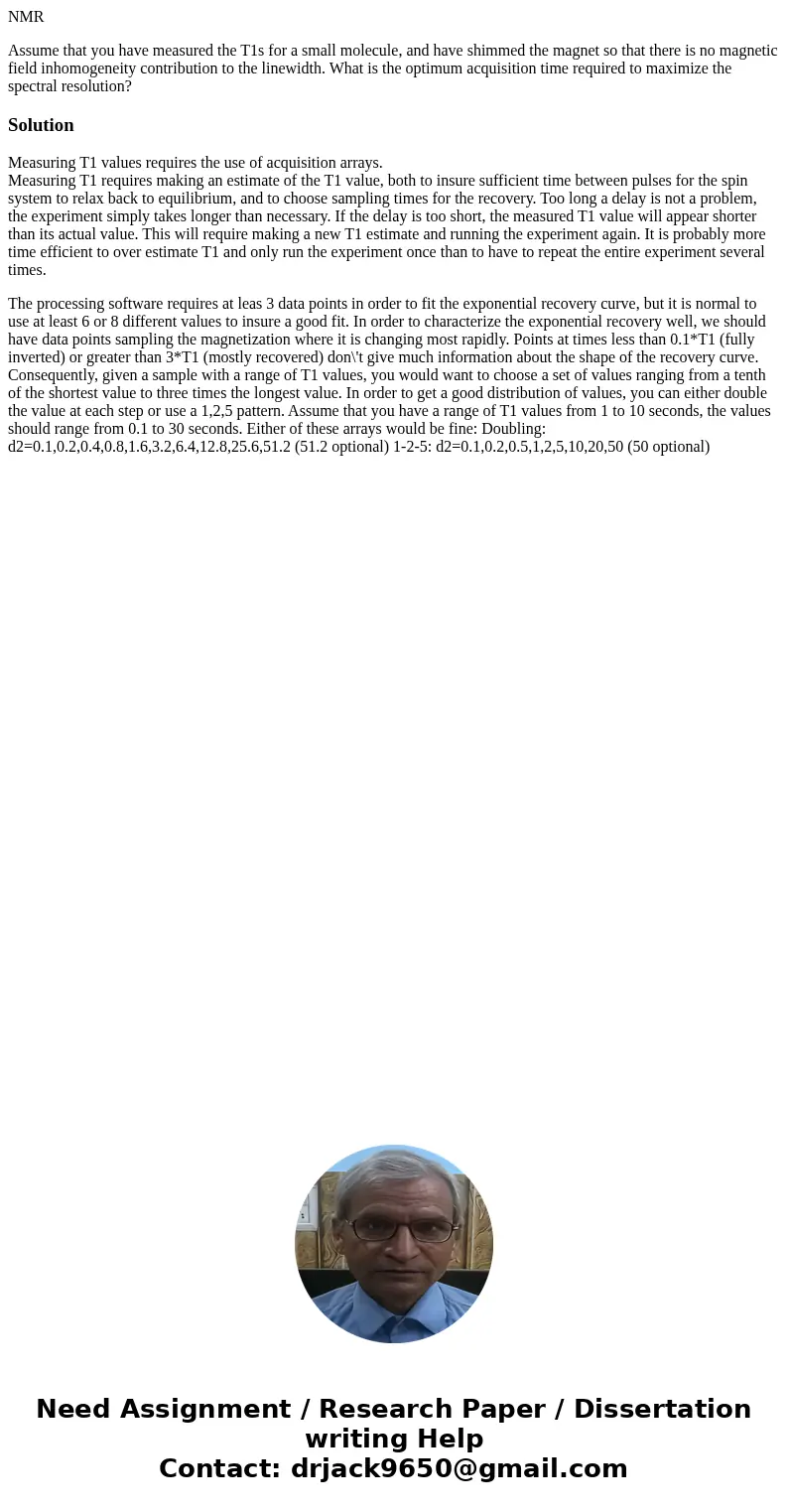NMR Assume that you have measured the T1s for a small molecu
NMR
Assume that you have measured the T1s for a small molecule, and have shimmed the magnet so that there is no magnetic field inhomogeneity contribution to the linewidth. What is the optimum acquisition time required to maximize the spectral resolution?
Solution
Measuring T1 values requires the use of acquisition arrays.
Measuring T1 requires making an estimate of the T1 value, both to insure sufficient time between pulses for the spin system to relax back to equilibrium, and to choose sampling times for the recovery. Too long a delay is not a problem, the experiment simply takes longer than necessary. If the delay is too short, the measured T1 value will appear shorter than its actual value. This will require making a new T1 estimate and running the experiment again. It is probably more time efficient to over estimate T1 and only run the experiment once than to have to repeat the entire experiment several times.
The processing software requires at leas 3 data points in order to fit the exponential recovery curve, but it is normal to use at least 6 or 8 different values to insure a good fit. In order to characterize the exponential recovery well, we should have data points sampling the magnetization where it is changing most rapidly. Points at times less than 0.1*T1 (fully inverted) or greater than 3*T1 (mostly recovered) don\'t give much information about the shape of the recovery curve. Consequently, given a sample with a range of T1 values, you would want to choose a set of values ranging from a tenth of the shortest value to three times the longest value. In order to get a good distribution of values, you can either double the value at each step or use a 1,2,5 pattern. Assume that you have a range of T1 values from 1 to 10 seconds, the values should range from 0.1 to 30 seconds. Either of these arrays would be fine: Doubling: d2=0.1,0.2,0.4,0.8,1.6,3.2,6.4,12.8,25.6,51.2 (51.2 optional) 1-2-5: d2=0.1,0.2,0.5,1,2,5,10,20,50 (50 optional)

 Homework Sourse
Homework Sourse